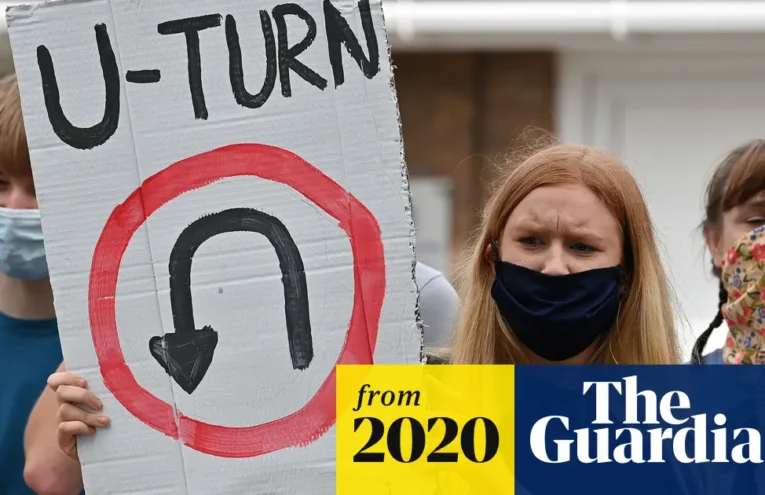In Higher Education, the nature of the Covid-19 pandemic has resulted in news, guidelines and often, law changing so rapidly that even the eagle eyed amongst us have difficulty in keeping up. In the world of PBSA we have been pulled in several directions. On a micro level, operators have been spread thinly as they work to keep students and staff safe, resolve rental fee grievances, reassure university partners, implement a plethora of safety measures and forecast as best they can, potential voids for 20/21. On a macro level, the running rhetoric is that PBSA continues to be a solid investment with additional growth predicted over the coming years. However this can be difficult to comprehend when many are not reaching occupancy level targets and are still concerned over whether their international bookings will physically turn up. Amongst investors and advisers, Covid-19 may be viewed as a short-term blip, but what impact will this “blip” have over the next few years, how long will it last and when will “normal” return? By way of a recap, the Government’s U-turn on A-level and Highers results and, subsequent abolishment of student number caps and course caps ensured that many universities previously worried about the impact of Covid-19 were set to have a record number of students commencing courses. However, it wasn’t all positive news as some lower tariff universities were set to miss out, placing them in significant financial difficulty as they failed to secure adequate student numbers. After a week of turmoil for the A-level students who received unexpected grades, (as a reminder, 40% were downgraded because of Ofqual’s algorithm), the Government’s decision to eventually U-turn A level results decisions was welcomed. The U-turn decision, one which universities were not consulted on resulted in an increase in the number of students equipped with the grades to match the offer of their first-choice university. However, many of these students were rejected from their first choice and their places offered to other students. Additionally, students who selected a university place via their insurance offer or clearing run the risk of leaving those universities in financial jeopardy as students seek to take places at preferential universities. As a result, we witnessed some universities accept all students who received the necessary grades while others guaranteed them a place in 2021 instead. This of course will have a knock effect on opportunities for the A level class of 2021. Alistair Jarvis, chief executive of Universities UK and Dr Tim Bradshaw, chief executive of the Russell Group both conveyed how this U-turn significantly challenged Universities in terms of capacity, staffing, placements, and facilities – stretching resources to the point that it undermines the student experience. Additionally, in light of the Covid-19 pandemic, when the onus is on universities to keep students and staff safe and implement social distancing measures, Dr Tim Bradshaw argued there are limits to what the University sector can do, with The Independent reporting that some universities have lecture rooms with 20% capacity only as a result of required Covid-19 social distancing measures. Increasing Capacity, is it that simple? The Government’s expectation for universities to increase capacity as much as possible to accommodate affected students was met with a high degree of frustration by many universities who were capped by course, facility, and staff restrictions. UCAS reported 69% of students were offered their first-choice institution, a higher proportion compared to the same period last year. The government’s decision to lift the cap on student numbers to allow universities to accept as many students as they like sounded like a good idea, however, this was limited by physical restrictions. To assist universities, the Government increased funding for certain restricted courses, including medicine and dentistry, but it still did not address concerns about staying Covid-19 compliant, with many Universities restricted on the number of places due to the requirement to provide one way systems and social distancing in teaching rooms, libraries and, catering outlets. Expect to see more of an impact on ‘lower tier’ universities? Recent data from UCAS indicated positively that acceptances from UK students rose by 2.6% compared to 2019. Placed students from outside the EU grew by 3.3% including an increase of 15.6% from the Chinese student community. However, acceptances from EU students declined by 8.5%. Concerningly although unsurprisingly, StuRent reports that student growth remains uneven across universities. The most prestigious institutions have reported year-on-year growth and an acceptance increase of 6.3%, compared to a fall of 0.2% for those deemed as lower tariff. Isolating non-EU students, higher tariff providers have reported an increase of 9.7% in 2020, whilst medium and lower tariff providers have reported declines of 9.3% and 6.0% respectively. Overall, this increase in higher tariff acceptances resulted in almost a third of students (34%) choosing to study at higher tariff universities, continuing the trend of “seeking out quality” as witnessed in recent years The Government announcement to allow UK students who have accepted offers based on their downgraded results, to release themselves if another offer is reinstated based on their updated grades, presented a further challenge to less prestigious universities who were already suffering from a decline in international numbers. Mary Curnock Cook, former head of UCAS, predicted that up to 55,000 students could try and switch to their first-choice and during the U-turn period we witnessed the chaos caused for university admission teams as they grappled with ensuring each student had the correct offer. This, coupled with an unlimited cap on student numbers, resulted in lower tier universities facing significant financial pressures and as we are aware, impacts to student numbers and finances this year will be felt over the next 3-4 years. As a result, many UK universities and supporting bodies are continuing to demand government support and funds to support institutions facing crippling shortfalls Bad News for Student Accommodation providers? One of the biggest concerns since Covid-19 brought the world to a halt, closing universities and sending
As A level results become a distant memory and the clearing process comes to an end, student housing professionals up and down the country are busy preparing for the arrival of thousands of eager and nervous new students. This includes individuals aiming to fill the 627,000 plus purpose-built student accommodation (PBSA) beds in the UK. Preparing for and welcoming those students is no mean feat. It can be physically and mentally exhausting, considered a rite of passage for those in the profession and a necessary part of helping residents to settle in and start their year on a positive note. Historically, attitudes amongst university faculty were, that if students could not succeed independently at university, they were not deserving of a place (Hunter, Murray and Moore, 2007). However, in recent years, as government focus has shifted towards retention and attrition rates, the subsequent challenges new students now face and the reasons they decide to withdraw has placed a lens on how students transition into Higher Education (HE). The methods by which universities and their subsequent departments support an increasingly diverse cohort of students are under scrutiny and appropriate support and induction measures which ensure the transition to university is smooth have become a necessity. A whole institution approach Yorke and Thomas (2003) indicated that a positive whole-institution approach and response was necessary in order to “maximise the success” of all students. Potential success factors identified included the notion that the atmosphere of an institution should be perceived as “friendly” and importantly, there is “an emphasis on support leading up to, and during the critically important first-year of study.” Furthermore, approaches for improving retention most widely recommended during the early stages of commencing university also focus on providing an extended induction period. As a result, helping to entrench new students into university life via interventionist or scheduled methods such as welcome talks, social events or longer induction weeks has become the norm. Each with the intention of reducing the feeling of overwhelm, ensuring students feel part of a supportive community, their learning is enhanced, they are retained during the period of transition and individual university attrition rates are not negatively affected (Palmer, O’Kane and Owens, 2009). How can PBSA play a role? Unfortunately, there is a paucity of research which outlines whether specifically, PBSA has the capacity to contribute to student success by playing a pivotal role in the process of transition to university. While Yorke and Thomas advocated for a whole university approach in 2003, the inclusion of PBSA partnerships was not considered. In fact, by today’s standards, PBSA barely existed in 2003. However, my eleven years’ experience combined with the many insightful conversations I have with colleagues in the sector, tells me it most certainly does. For the moment and until improved research becomes available, anecdotal evidence and an honest exchange of best practice and experience is what many of us rely on. My own observations, while many, are summed up in the following four recommendations: It starts at the top PBSA providers keen to ensure the transition to their accommodation and university itself is seamless, will have leaders who possess the unshakeable belief, knowledge and operational experience that accommodation plays an intrinsic role in the holistic well-being of all residents. They will match this with appropriate funding, recruit national and/or regional in-house student affairs expertise and will cascade this belief system to their direct reports. For these PBSA providers, it is a whole company approach, one where every department and employee has a sharp understanding of the role they play in supporting all residents at every stage of their journey. It will be supported by their board, is more than a marketing exercise and will be embedded into their culture. Instead of providing education on the operational components only, I believe it’s now essential that training plans provide an overview of the UK HE landscape, insight in to the challenges faced by students, a grounding in key student affairs theories, mental health first aid training and conflict and mediation guidance as a minimum. Educating new recruits for the potential challenges we’re all too familiar with not only empowers but prepares them to positively support their residents as they transition to, through and out of their accommodation. Recruitment and Induction Undertake a quick search for PBSA student facing roles and it will yield reams of vacant positions. Scan in detail and you’ll notice, the advertisement focuses mainly on managing the asset. While important, in comparison to our North American colleagues, there is little which describes the responsibilities associated working with and for student residents. Position descriptions rarely spotlight the holistic requirements (community development, crisis intervention, academic advice, counselling and signposting etc) which can come as a surprise to those entering the profession for the first time and likely contributes to turnover of staff. Given the rise in PBSA developments, operators and recruitment agencies are usually scrambling to hire the best from a shrinking talent pool. As a result, reviewing how and where from new candidates are attracted requires a rethink, less reliance on the hospitality industry and a focus on attracting talent from other sectors. In addition, the induction experience for new PBSA professionals should be given a priority status. If you build it, they will come. Or will they? We’ve seen a welcome rise in the number of PBSA’s delivering their own creative approaches to ensuring students transition well. However, there remains the belief among the inexperienced that allocating funds to res life/student experience programming will result in residents turning up in droves. Sometimes they do, sometimes they don’t. Successful programs are well researched and informed by students, impeccably organised, are underpinned by academic theory and importantly, are delivered by passionate, well informed individuals. They are created in tandem with the student journey and are appropriate to the demographic of a property. It is the determination and commitment of those who create and deliver meaningful methods for building community in their
Chair: Martin Hadland, Founder & Managing Director of Student First GroupPanel: Richard Gabelich, Founder & CEO of Student First Group James McGrath, Business Development Director & Co-Owner of Mezzino Ben Leech, Director at Equitix Mike Ferguson, Finance Director at The London School of EconomicsRebecca O’Hare, Assistant Director – Residence Life & Accommodation Officeat the University of Leeds In this roundtable, we collected thoughts and predictions for the future of purpose-built student accommodation (PBSA) in the next year from professionals in university accommodation and in the development and operations of PBSA. Our panel discussed their strategies implemented by institutions, PBSA operators and developers as they prepared their students, staff and general operations for the year ahead. Thank you to our panellists for your contributions, insights and for being part of the discussion. You can view all our discussion highlights in the videos below. `Has Everything Gone back to “Normal” at Your Institute and how are your students settling in? https://sfg.ltd/wp-content/uploads/2024/09/Affect-of-COVID-Highlight.mov Has Everything Gone back to “NORMAL” AT YOUR INSTITUTE AND HOW ARE YOUR STUDENTS SETTLINGS IN? https://sfg.ltd/wp-content/uploads/2024/09/Normailty-Full-Highlight.mp4 How are your institutes planning for the future with rising number of students returning? https://sfg.ltd/wp-content/uploads/2024/09/Future-of-Accommodation.mov ‘What changes from the pandemic will you continue to implement at your institutions?’ https://sfg.ltd/wp-content/uploads/2024/09/Changes-1.mov How do you view the partnerships between universities and accommodation providers? https://sfg.ltd/wp-content/uploads/2024/09/Partnership-1.mov




